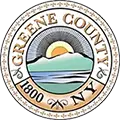Clean Energy Programs and Resources
Clean Energy Communities
NYSERDA provides the resources and funding to help municipalities invest in clean energy solutions for their community.
Climate Leadership and Community Protection Act (CLCPA) Targets
The New York State Climate Leadership and Community Protection Act (“CLCPA”), among other things:
(a) directs the DEC to establish a statewide greenhouse gas emissions limit as a percentage of 1990 emissions as follows: (i) 2030: 60% of 1990 emissions; and (ii) 2050: 15% of 1990 emissions;
(b) directs the Public Service Commission to establish programs to require that a minimum of 70% statewide electric generation be produced by renewable energy systems by 2030, and that by the year 2040 the statewide electrical demand system will generate zero emissions; and
(c) directs the PSC to require the procurement by the state’s jurisdictional load-serving entities of at least 9 gigawatts of offshore wind electricity generation by 2035 and six gigawatts of photovoltaic solar generation by 2025, and to support three gigawatts of statewide energy storage capacity by 2030
Accelerated Renewable Energy Growth and Community Benefit Act
In April 2020, New York State adopted, as part of its budget, the Accelerated Renewable Energy Growth and Community Benefit Act. The new law is intended to streamline and accelerate the siting and development of large-scale renewable energy project, namely utility scale solar facilities.
The newly created Office of Renewable Energy Siting (Siting Office) is to work with municipalities to garner input, run the public comment process and adjudicate substantive concerns. However it is anticipated that the role of municipalities will be much narrower than the current role under the current Article 10 siting process. The Siting Office will be looking at a projects’ adherence to local laws and regulations, such as local solar sting laws. The Siting Office can make a determination that local regulations as applied to the proposed renewable energy facility are “unreasonably burdensome” in view of the targets of the Climate Leadership and Community Protection Act and the environmental benefits of the proposed major renewable energy facility.”
